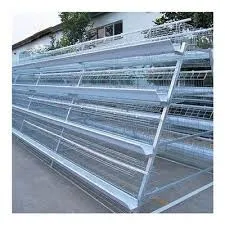Understanding the Importance of Poultry Scalding in the Processing Industry for Quality Meat Production
8 月 . 12, 2024 17:56 Back to list
Understanding the Importance of Poultry Scalding in the Processing Industry for Quality Meat Production
Understanding Poultry Scalders A Key Component in Processing
Poultry processing involves a series of meticulous steps to ensure that the meat products are safe, clean, and suitable for consumption. One of the critical stages in this process is scalding. The poultry scalder is an integral piece of equipment used in various poultry processing plants, playing a pivotal role in preparing birds for further processing. This article will delve into how poultry scalders function, their importance in food safety, and the technological advancements that have improved their efficiency.
At its core, a poultry scalder is designed to immerse freshly processed birds in hot water. The temperature of the water is typically maintained between 140°F to 160°F (60°C to 71°C), although this can vary depending on specific requirements and the type of poultry being processed. The primary purpose of scalding is to loosen the feathers, making plucking significantly easier. When the feathers are subjected to hot water, the protein in the feather shafts breaks down, allowing for easier removal.
The scalding process not only facilitates feather removal but also serves as an initial sanitation step. The heat kills bacteria and other pathogens that may be present on the birds' surfaces, thus playing a crucial role in food safety. In recent years, with the heightened awareness of foodborne illnesses, the importance of thorough scalding has become even more pronounced. Properly designed and maintained scalder systems help ensure that the final product meets health standards and is safe for consumers.
poultry scalder

There are different types of poultry scalders used in the industry, each with its own unique mechanisms. The two most common are dry and wet scalders. Dry scalder systems rely on steam to heat the birds, while wet scalders immerse the birds in hot water. Wet scalding is more prevalent due to its efficiency in feather removal and its dual role in sanitation.
In light of technological advancements, modern scalders are increasingly equipped with automated systems to regulate temperature and water flow. These systems improve consistency and control over the scalding process, reducing variability that can affect the quality of the final product. Additionally, the integration of sensors and automated monitoring systems allows for real-time data collection, enabling operators to make informed decisions that can enhance efficiency and food safety.
Furthermore, some innovative poultry processing facilities are exploring the use of alternative scalding methods, such as infrared and air scalding. These technologies aim to provide efficient feather removal while minimizing water usage and reducing potential cross-contamination issues associated with traditional wet scalding methods. Though still in the developmental stages in many areas, these alternatives show promise for the future of poultry processing.
In conclusion, poultry scalders represent a vital component of the poultry processing industry, ensuring that birds are properly prepared for further processing and consumption. Through effective feather removal and sanitation, scalders enhance food safety, contributing to the overall quality of poultry products. As technology continues to advance, we can expect ongoing improvements in scaler design and functionality, paving the way for a more efficient and sustainable poultry processing industry. The careful consideration of scalding practices not only represents adherence to food safety standards but also signifies a commitment to improving the quality and safety of food for consumers worldwide.
-
Battery Layer Cage Systems With Automatic Feeding Machine
NewsMar.07,2025
-
Hot Selling Multi Function Vacuum Packaging Machine
NewsMar.07,2025
-
Chicken scalder plucker machine for sale poultry scalder chicken plucking machine
NewsMar.07,2025
-
Egg Tray Making Machine 1000, 2000, pulp molding machine
NewsMar.07,2025
-
Automatic Feeding Line System Pan Feeder Nipple Drinker
NewsMar.07,2025
-
cage layer chicken
NewsMar.07,2025






